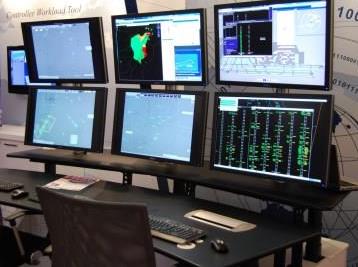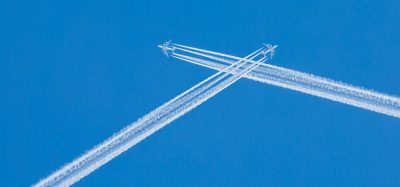Building the bridge between airports and ATM
Posted: 7 March 2014 | International Airport Review | 2 comments
The key to improving the passenger experience is stakeholder collaboration; the aviation industry should strive to remove silos and allow partners to operate more efficiently…


Airports are like any other business; they need to retain and appeal to customers by providing a quality service as efficiently as possible.
The picture is complicated by the many types of customers an airport has to satisfy – passengers, airlines, retailers, commercial partners, ground handlers, security, immigration, and so on. As the stakeholders with their names on the door and tickets respectively, the airports and airlines are most likely to bear the brunt of complaints from passengers when service falters. Whether it’s due to flight delays that couldn’t be avoided or queues in security, the end-to-end process dictates that due to the inevitable interdependency on one and other for the end product, there needs to be an effective working relationship between the players to keep passengers satisfied.
The key to improving the passenger experience (and therefore a happy airline) is collaboration between various stakeholders – airport management, airlines, baggage handlers, security, customs, and retail. Improved communication, a shared situational awareness and more streamlined processes will remove silos and allows the partners to operate more efficiently and provide a better quality service.
Join us live: Shaping the Next Generation of Hold Baggage and Air Cargo Screening
Join us live for an insightful webinar on 11th December at 14:00 GMT, in collaboration with Smiths Detection, as we explore the strategic balance of operational efficiency, regulatory compliance, and sustainability in high-volume security environments.
This session offers a focused look into future-proofing your security strategy.
Key learning points
- Cost Reduction: Strategies to minimize bag travel time while simultaneously reducing operational costs.
- Regulatory Roadmap: Insights into the next wave of regulatory changes and their impact on future investment decisions.
- Sustainable Systems: Practical approaches to building sustainability into security systems and lowering the total cost of ownership (TCO).
- Scalable Solutions: Real-world examples of scalable systems supporting current airport growth and preparing for tomorrow.
Register now for expert insights, case studies, and actionable strategies on operational efficiency!
Ideally, these streamlined processed aren’t simply related to the airport in question, but extend to the wider local, national, international and intercontinental air traffic networks and airports.
In many cases, both Air Traffic Control and Airport Operations remain separate entities in the view of the entire end-to-end process from kerb, to gate, to sky and return. By building an effective link between airport and ATM operations, including formalising the sharing of all key Airport Collaborative Decision Making (A-CDM) milestone and sub-milestone data, there is potential to transform the experience entirely.
With EUROCONTROL predicting that there will be approximately 40,000 daily flights across Europe alone by 2020, an integrated approach is the key to the aviation industry continuing to function at a high standard. Stacking aircraft in the sky or queuing them for the runway is just one impact of the issue. Ground staff need to be able to turn those aircraft around quickly and put the right resources in place to keep people moving through the airport. They also need to let the ATM networks know when that aircraft will be taking off including any possible delays to allow the networks to optimise the constrained airspace available.
Airport operators are increasingly implementing centralised systems to provide integrated end-to-end solutions. In Norway, for example, one of the world’s largest airport operators Avinor is implementing Lockheed Martin’s Chroma Airport Suite to centralise key operational systems across 46 airports. This approach allows Avinor to have a clear, real-time view of the operational status of each airport using the same data set and without the need to communicate this through any ATM network manager. In essence, the new system provides all airports, large and small, with truly collaborative decision making capabilities based on real-time data.
Extending this example to arrival and departure metering is a key example of how the ground operation can be better integrated in to the air traffic component to better deliver an end to end streamlined system. By removing data silos and generating an all-encompassing bigger picture of the operation, and subsequent passenger experience, from the kerb, gate, cloud and back again reduces the risk of departure delays and the effect of delayed arrival flights on terminal operations.
The A-CDM and Single European Sky ATM Research initiatives are correct. It is this efficient sharing of information that will help all stakeholders play their part in making the most of airport assets and airspace capacity and getting a better service to both airlines and passengers. Going further, the most efficient aviation operations will be seen where an airport, airline and all key partners share even more detailed data that informs key sub-milestones. Collaborative decision making shouldn’t start and end with the aircraft. It should begin with the passenger and ensure the journey to their final destination is seamless.
Join our free webinar: Beyond silos: How ecosystem thinking elevates the airport experience
In today’s complex aviation landscape, airports are moving beyond siloed operations to embrace a new era of collaboration. This webinar focuses on how leading airports are using ecosystem thinking to adapt, personalize, and continuously improve every touchpoint, boosting both passenger satisfaction and non-aeronautical revenue.
Date: 13 Nov | Time: 10:00 GMT
REGISTER NOW TO SECURE YOUR SPOT
Can’t attend live? No worries – register to receive the recording post-event.
Related topics
Air traffic control/management (ATC/ATM), Airport Collaborative Decision Making (A-CDM)



















This comment is spot on… In North America CDM ATM started about 13 years ago and has made air holds and even gate holds a thing of the past… There are even delay programs for constricted airspace as well as airports… Some airlines run their own ground delay programs in order to achieve efficiency when gate capacity is constrained…
Alo what a statement: “In North America CDM ATM started about 13 years ago and has made air holds and even gate holds a thing of the past” – do you refer to the parking of ready to take-off airplanes including passengers on the taxiways for hours?
There was the need to ensure that ppassengers are not taken “hostage” by airlines/pilots trying to keep their position in a departure queue longer than the the trip to the destination.
the US-transportation system has their issues as well as the europeans and even more the emerging countries will face the same lack of capacity.
You need to reduce demand and/or make best use out of the recources available. Planning ahead is the key – and if you dont serve the plan you are out. As simple as that…